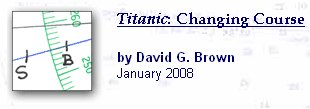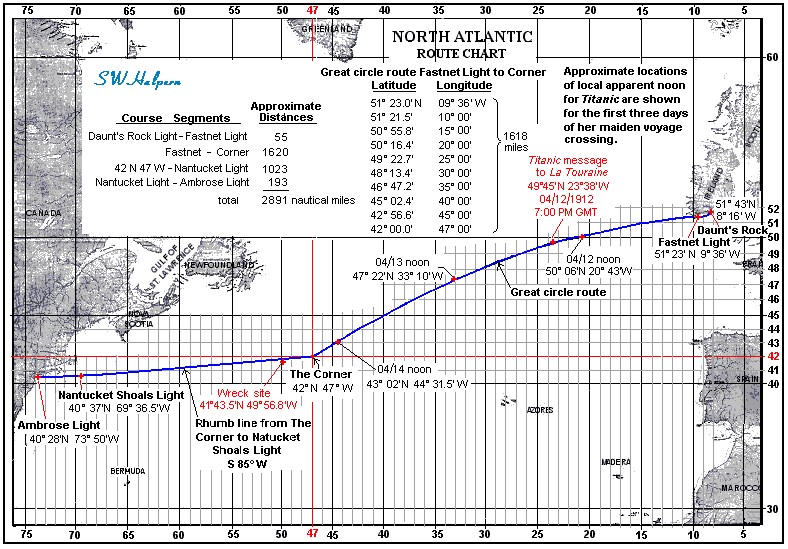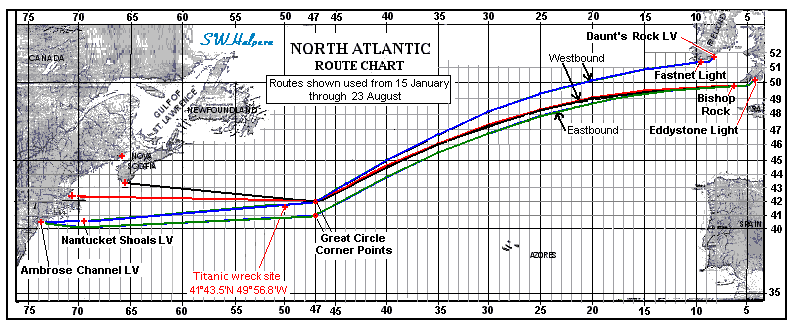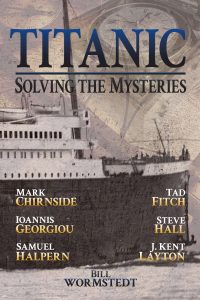Titanic: Time & Speed Dossier

Above: In 2006, it was discovered that there was an error in the time calculation on Olympic’s maiden voyage log card, which meant that Olympic’s average speed was understated and that the new liner performed better than anyone realised at the time. This discovery was made public in an article co-authored by Mark Chirnside and Sam Halpern, published in the Titanic International Society’s Voyage journal and then subsequently online at Encyclopedia-Titanica. The online article can be accessed at: Olympic and Titanic: Maiden Voyage Mysteries. (Courtesy Phil Hind.)
 Left: The ‘Maiden Voyage Mysteries’ article also touched upon the related issue of the speed Titanic was making on her maiden voyage.
Left: The ‘Maiden Voyage Mysteries’ article also touched upon the related issue of the speed Titanic was making on her maiden voyage.
In an article available on the Great Lakes Titanic Society website from late January to mid March 2008, writer David G. Brown criticised our findings and claimed that:
- Titanic altered course by 11 degrees (about one compass point) at 11.30 p.m., ten minutes before the fatal collision with the iceberg, and;
- that the time of Titanic’s accident was 12.04 a.m. measured in April 14th hours, or twenty-four minutes later than the time of 11.40 p.m. that has been universally accepted by historians.
- However, the Brown article also referenced some comments from the Maiden Voyage Mysteries piece. It included factual errors regarding comments made in the Maiden Voyage Mysteries piece.
Mr. Brown’s paper is no longer online. However, copies may be obtained on request by contacting him privately. (Please note that you need to be a registered user of the Encyclopedia-Titanica message board to use this facility.) (Courtesy Denise Hunyadi.)

Above: As it was felt necessary to address many of the inaccurate claims made in the Brown paper, Mark Chirnside and Sam Halpern co-authored a paper responding to them, Titanic: Changing the Reality. It argued that:
- the theory that Titanic altered course at 11.30 p.m. is nothing more than unsupported, unsubstantiated speculation;
- the supposition that clocks used by the crew were set back by 24 minutes before the accident thus placing the time of the accident at 4 minutes past 12 on unadjusted clocks does not hold up when all available evidence is considered;
- that several items stated as fact in Mr. Brown’s work are nothing more than assumptions, and;
- that there were a number of assumptions and disturbing accusations in the Brown paper, concerning the work of other researchers, which have no basis in reality.
External Links

Sam Halpern’s Titanic Chartroom contains a number of interesting articles, from an examination of Titanic’s speed, daily runs, and revolutions; to the changing watch schedules; and other material including an examination of Titanic’s watertight subdivision and floodable length.
 Further details on Titanic‘s time and speed during her maiden voayge can also be found in Titanic: Solving the Mysteries, which Mark contributed to. It was self-published in 2019, and can only be ordered directly from the publisher, Blurb, at this link.
Further details on Titanic‘s time and speed during her maiden voayge can also be found in Titanic: Solving the Mysteries, which Mark contributed to. It was self-published in 2019, and can only be ordered directly from the publisher, Blurb, at this link.
Among the subjects covered in this book is an in-depth analysis of Titanic‘s Magneta clock system, and how it was likely adjusted every night, as well as her positions throughout the maiden voyage, and the time difference between the ship and time ashore in places like New York and London, when she struck the berg and sank. The book even managed to figure the likely movements of the ship through the remainder of her maiden voyage, had she not struck the iceberg.
The book was authored by a team of researchers listed alphabetically: Mark Chirnside, Tad Fitch, Ioannis Georgiou, Steve Hall, Samuel Halpern, J. Kent Layton, and Bill Wormstedt.
